Scientific happenings, big and small, on this day in history
But first, today’s quiz:
What famous inventor, born on this day in 1871, will forever be famous for something he did for only 12 seconds? Think you know…? You might be right. To be sure check out the answer at the end of the article.
EVENTS
1856
Condensed milk patented
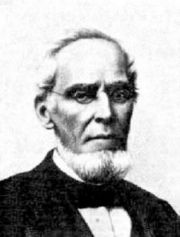
In 1856, Gail Borden of Brooklyn, NY, was issued a U.S. patent his process for condensed milk (No. 15,553). Condensed milk could be preserved for long periods of storage, and in this form milk became more readily available in large cities than had been possible before.
Prior to the nineteenth century, drinking milk was an iffy situation with regard to health risks. Milk straight from the cow was loaded with bacteria. Milk not consumed within a matter of hours in summer soon spoiled in the heat. Illness allegedly derived from contaminated milk consumption was referred to as "the milksick," "milk poison," "the slows," "the trembles," and "the milk evil." Granted some of these illnesses (considering modern-day knowledge of lactose intolerance) were probably not due to the milk or milk alone, but the stigma persisted.
The idea for a portable canned milk product that would not spoil came to Gail Borden during a transatlantic trip on board a ship in 1852. The cows in the hold became too seasick to be milked during the long trip, and an immigrant infant died from lack of milk. Borden realized his goal in 1854. His first condensed milk product lasted three days without souring. He first thought the condensing process of the milk made it more stable but later on realized it was the heating process that killed the bacteria and microorganisms that cause spoilage. Borden was granted a patent for sweetened condensed milk in 1856. The sugar was added to inhibit bacterial growth.
http://homecooking.about.com/od/milkproducts/a/canmilkhistory.htm
1960
First live animals launched on successful roundtrip trek into space
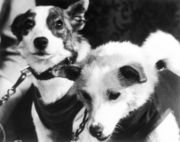
Korabl-Sputnik 2, popularly known as Sputnik-5, was launched on Friday 19 August 1960 from the Baikonur Cosmodrome by a Vostok rocket. It carried two dogs, Strelka and Belka, and other biological specimens including plants, rats and mice.
This mission followed a previously unsuccessful attempt. Anxious to carry out the first recovery of a spacecraft, and to test the life-support system of the 1K spacecraft; on July 28, 1960, a Vostok booster was launched at with two dogs, Chaika and Lisichka, on board. The goal was to complete a 24-hour mission. However one of the strap-ons broke away from the launch vehicle and caused the booster to explode at T+28.5 seconds - killing both dogs.
No such tragedy met Sputnik-5. On 20 August 1960 the retro-rocket fired 8000 km from the landing point. The ejector mechanism operated as a test for the Vostok ejector seat, and the container carrying Strelka and Belka descended under a parachute. The experiment container with the dogs landed at approximately 11:02 UT - the spacecraft touched down nearby at about the same time.
A card accompanied Sputnik 5, in case the capsule landed outside the recovery zone. The card and related instructions directed anyone finding it to contact local officials immediately. The finder was also asked not to open the capsule but to set it upright, and to leave it exactly where it had landed.
At a dinner during the summit between US president John F. Kennedy and Soviet leader Nikita Khrushchev in Vienna in June 1961, Khrushchev sat next to the president's wife Jaqueline Kennedy. He bragged about the flight of Soviet space dogs and told Mrs Kennedy about the puppies of the space dog Strelka. Out of lack of dinner topics and more as joke, she said to Khrushchev, "Couldn't you send me one?" She did not think more about it until two months later when Soviet ambassador Menshikov, during a visit to the White House, delivered one of the puppies to an astounded Mrs Kennedy.
http://www.svengrahn.pp.se/histind/sputnik5/sputnik5.html
1979
Soviet Crew returns to Earth after record-breaking 175 day spaceflight
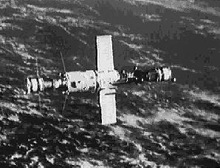
Cosmonauts V. A. Lyakhov and V. V. Ryumin returned to earth in Soyuz 34 on August 19, 1979, after 175 days in space on a mission aboard the Salyut 6 space station. The two-man crew arrived at Salyut 6 on February 26, aboard Soyuz 32 - to put the station into operation, conduct scientific investigations and experiments, and prepare it for repair of the propulsion system.
The Salyut 6 space station made possible the first long-duration Soviet space missions. The station hosted 16 cosmonaut crews during its approximately five years in orbit, including five crews that stayed for longer than one month.
Lyakhov and Ryumin were to receive the international crew of Nikolai Rukavishnikov and Bulgarian Intercosmos cosmonaut Georgi Ivanov, on April 11. But during their flight aboard the Soyuz 33, its main engine failed, forcing its return to Earth without docking with Salyut 6. This cast doubt on Soyuz 32's engine and the engines of other Soyuz Ferries. This in turn cast doubt on the Salyut 6 crew's ability to complete their mission - Soyuz 32 was nearing the end of its rated 90-day space endurance and needed to be replaced with a fresh craft. The Soyuz 33 crew returned safely to Earth on April 12 after a ballistic re-entry. It was decided to launch Soyuz 34 unmanned to replace Soyuz 32, which exceeded its 90-day stay limit on May 27.
On May 29 Soyuz 34 arrived unmanned, which ensured that Ryumin and Lyakhov would be able to complete their mission. Soyuz 34 also tested improvements to the Soyuz main engine, meant to prevent recurrence of the Soyuz 33 failure. The spacecraft delivered 200 kg of cargo. Soyuz 32 then returned to Earth unmanned.
After completing their mission objectives, the crew returned safely in Soyuz 34, 29 years ago today.
http://www.astronautix.com/flights/salt6eo3.htm
BIRTHS
1790
Edward John Dent (Born Aug. 19 1790; died Mar. 8 1853)
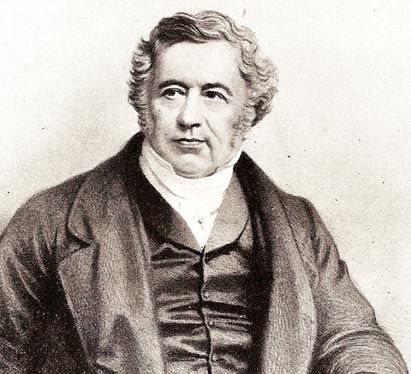
Dent was a famous English watchmaker noted for his highly accurate clocks and marine chronometers.
Dent learned the clockmaker's trade from Richard Rippon and, during 1815–29, established a reputation as a builder of accurate chronometers. His reputation for precision eventually brought requests from the Admiralty and the East India Company. Dent confirmed his expertise by creating in 1829 a chronometer action that incorporated an improved method of reducing the timing errors caused by fluctuations in temperature. From 1830 until 1840 he was the partner of John Roger Arnold in the manufacturing of first-rate clocks and watches. Afterwards as the proprietor of three clock shops in London, Dent won the esteem of Sir George Airy, the astronomer royal, who recommended him as the maker of a large clock for the tower of the new Royal Exchange. Dent established a workshop in the Savoy to produce this excellent timepiece, which was installed in 1844.
In 1852 Dent won the commission to make the great clock—now called Big Ben—for the Houses of Parliament at Westminster, but he died before completing the project. Upon the death of Rippon, Dent had married his widow, whose sons Frederick and Richard took Dent's name and succeeded to his business. Frederick Rippon Dent finished Big Ben in 1854.
http://en.wikipedia.org/wiki/Edward_John_Dent
1830
Lothar Meyer (Born Aug 19 1830; died Apr. 12 1895)
(Julius) Lothar Meyer was a German chemist who discovered the Periodic Law, independently of Dmitry Mendeleyev, at about the same time (1869). However, he did not develop the periodic classification of the chemical elements as thoroughly as Mendeleyev.
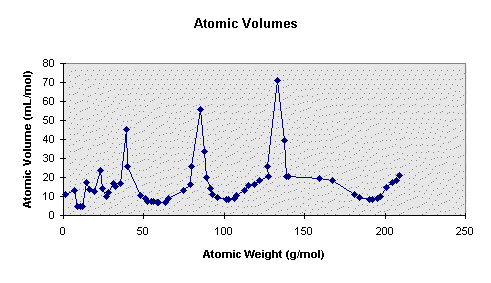
In 1870, Meyer made a chart that plotted atomic volumes against atomic weight. He measured the volume of one atomic weight's worth of each element - that is, one mole - and determined that since the number of atoms in each amount was the same, the volumes measured must represent the relative volumes of the individual atoms.
By plotting those volumes against the atomic weights, there is a recurring pattern - like waves with the crests and the troughs, or hills and valleys. The elements at the top of each one of those peaks are: lithium, sodium, potassium, rubidium, and cesium. Following each of those there is a repeating pattern. An important observation that Meyer made was the change in length of that repeating pattern. Hydrogen was a group all by itself; lithium through fluorine was another group; sodium through chlorine was another; potassium through bromine; and so on. Also of note was there are small groups at the beginning and then larger groups afterwards.
There is repeating periodicity of the atomic volume, but the periods changed in size. The first period is one element in length--hydrogen. The second and third periods are seven in length. The fourth and fifth periods are seventeen elements in length. Subsequent to Meyer's work all of the inert gases were discovered, so now there is one more element in each period - making 2, 8, 8, 18, 18.
http://dl.clackamas.cc.or.us/ch104-07/lothar_meyer.htm
1906
Philo T. Farnsworth (Born Aug. 19, 1906; died Mar. 11 1971)
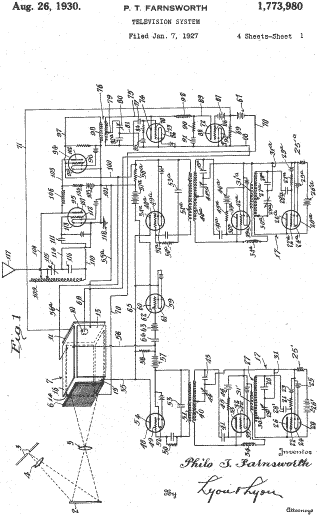
American engineer, Philo Farnsworth, was expected him to become a concert violinist, but his interests drew him to experiments with electricity. At the age of 12, he built an electric motor and produced the first electric washing machine his family had ever owned.
Philo Farnsworth attended Brigham Young University in Utah, where he researched television picture transmission. While in high school, Philo Farnsworth had already conceived of his ideas for television. In 1927, Philo Farnsworth was the first inventor to transmit a television image comprised of 60 horizontal lines. The image transmitted was a dollar sign. Farnsworth developed the dissector tube, the basis of all current electronic televisions. He filed for his first television patent in 1927 (pat#1,773,980.) Although he won an early patent for his image dissection tube, he lost later patent battles to RCA. Philo Farnsworth went on to invent over 165 different devices including equipment for converting an optical image into an electrical signal, amplifier, cathode-ray, vacuum tubes, electrical scanners, electron multipliers and photoelectric materials.
Philo Farnsworth died on March 11, 1971, in Salt Lake City, Utah.
"There's nothing on it worthwhile, and we're not going to watch it in this household, and I don't want it in your intellectual diet." - Philo Farnsworth's feelings about watching television.
http://inventors.about.com/library/inventors/blfarnsworth.htm
1935
Story Musgrave (Born Aug. 19, 1935)
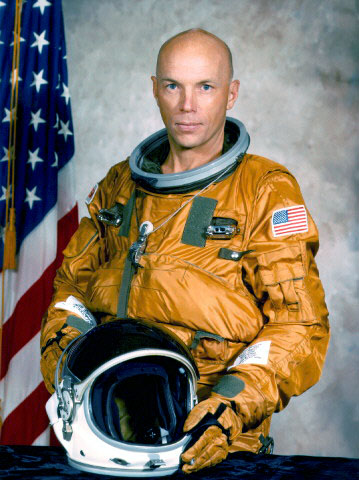
Story Musgrave is one of NASA's most experienced astronauts. With a 30 year career spanning the Apollo era of the 1960s right through to the Space Shuttle program of the 1990s, he is the only astronaut to have flown on all five Space Shuttles. He is also a pilot, surgeon, mechanic, poet and philosopher.
In August 1967, Musgrave was selected by NASA to be among the first cohort of astronaut-scientists. Until then, astronauts had been chosen from the ranks of military test pilots. After completing astronaut training, he worked on the design and development of the Skylab program and served as backup science pilot for the first Skylab mission. Dr. Musgrave helped design the spacesuits, life support systems, airlocks and manned maneuvering units that would be used for space walks and other extravehicular activity on the Space Shuttle missions.
Dr. Musgrave's first of six trips into outer space took place on the maiden voyage of the Space Shuttle Challenger in 1983, during which Musgrave and Don Peterson performed the first space walks off of the Shuttle. Perhaps the most dramatic of Story Musgrave's space mission was the fifth, on the Shuttle Endeavour. Musgrave commanded the mission to repair the damaged Hubble Space Telescope. During this 11-day mission, the Telescope was restored to full functionality. The repairs required five spacewalks, three performed by Dr. Musgrave himself. Story Musgrave flew his last space mission in January, 1996, on the Space Shuttle Columbia.
Besides his many scientific degrees, Dr. Musgrave has also earned a master's degree in literature. His hobbies include poetry, chess, gardening, photography, computer, running, scuba diving, flying and soaring in gliders.
http://www.spacestory.com/storyf.htm
http://www.achievement.org/autodoc/page/mus0bio-1
DEATHS
1662
Blaise Pascal (Born June 19, 1623; died Aug. 19, 1662)
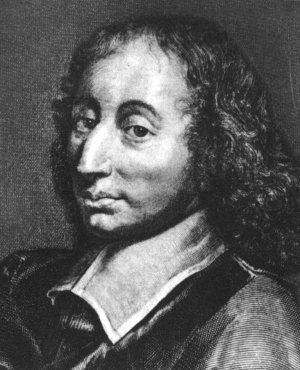
Pascal was a French philosopher, mathematician, and physicist, and considered one of the great minds in Western intellectual history.
In 1642 he invented the first mechanical adding machine. Pascal proved by experimentation in 1648 that the level of the mercury column in a barometer is determined by an increase or decrease in the surrounding atmospheric pressure rather than by a vacuum, as previously believed. Six years later, in conjunction with the French mathematician Pierre de Fermat, Pascal formulated the mathematical theory of probability, which has become important in such fields as actuarial, mathematical, and social statistics and as a fundamental element in the calculations of modern theoretical physics.
Pascal's other important scientific contributions include the derivation of Pascal's law or principle, which states that fluids transmit pressures equally in all directions, and his investigations in the geometry of infinitesimal. His methodology reflected his emphasis on empirical experimentation as opposed to analytical, and he believed that human progress is perpetuated by the accumulation of scientific discoveries resulting from such experimentation.
Pascal was known equally for his strong religious beliefs. Pascal espoused Jansenism and in 1654 entered the Jansenist community at Port Royal, where he led a rigorously ascetic life until his death eight years later. In 1656 he wrote the famous 18 Lettres provinciales (Provincial Letters), in which he attacked the Jesuits for their attempts to reconcile 16th-century naturalism with orthodox Roman Catholicism.
His most positive religious statement appeared posthumously; it was published in fragmentary form in 1670 as Apologie de la religion Chrétienne (Apology of the Christian Religion). Pascal's writings urging acceptance of the Christian life contain frequent applications of the calculations of probability; he reasoned that the value of eternal happiness is infinite and that although the probability of gaining such happiness by religion may be small it is infinitely greater than by any other course of human conduct or belief.
Pascal was one of the most eminent mathematicians and physicists of his day and one of the greatest mystical writers in Christian literature. His religious works are personal in their speculation on matters beyond human understanding. Pascal's prose style is noted for its originality, and affects his readers by his use of logic and the passionate force of his dialectic.
http://www.ideafinder.com/history/inventors/pascal.htm
1957
Carl-Gustaf Arvid Rossby (born Dec, 28, 1898; died Aug. 19, 1957)
Rossby was a Swedish-American meteorologist who first to explained the large-scale motions of the atmosphere in terms of fluid mechanics.
Rossby carried out fundamental work on the upper atmosphere, showing how it affects the long-term weather conditions of the lower air masses. Measurements recorded with instrumented balloons had demonstrated that in high latitudes in the upper atmosphere there is a circumpolar westerly wind, which overlays the system of cyclones and anticyclones lower down. In 1940 Rossby demonstrated that long sinusoidal waves of large amplitude, now known as Rossby waves, would be generated by perturbations caused in the westerlies by variations in velocity with latitude. Rossby also showed the importance of the strength of the circumpolar westerlies in determining global weather. When these are weak, cold polar air will sweep south, but when they are strong, the normal sequence of cyclones and anticyclones will develop.
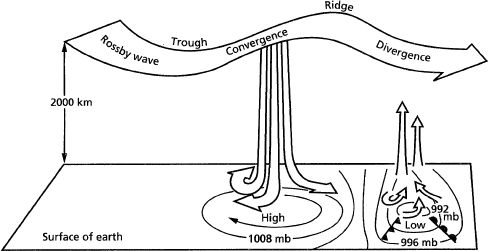
Rossby is credited with having discovered the jet stream. He also devised mathematical models to predict the weather which were simpler than those of Lewis F. Richardson. His school provided the ‘dynamic meteorology’ that allowed, with the coming of computers and weather satellites, the long-term prediction of weather.
Rossby’s innovations in the study of large-scale air movement and introduction of the equations describing atmospheric motion were largely responsible for the rapid development of meteorology as a science.
http://www.answers.com/topic/carl-gustaf-rossby
And the answer to today’s quiz:
The inventor born on this day in 1871, famous for something he did for only 12 seconds?
Orville Wright (Born Aug. 19, 1871; died Jan. 30, 1948)
Wright, American pioneer aviator, invented the first powered airplane capable of sustained controlled flight with his brother Wilbur. On December 17, 1903, at Kitty Hawk, North Carolina, Orville made the first ever manned powered flight: airborne for 12 seconds.
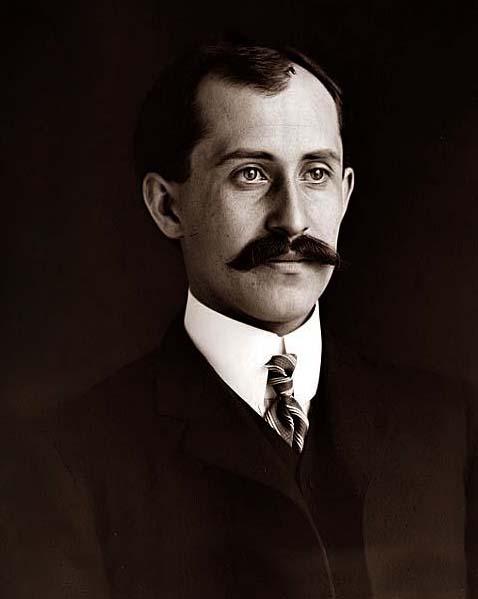





Comments